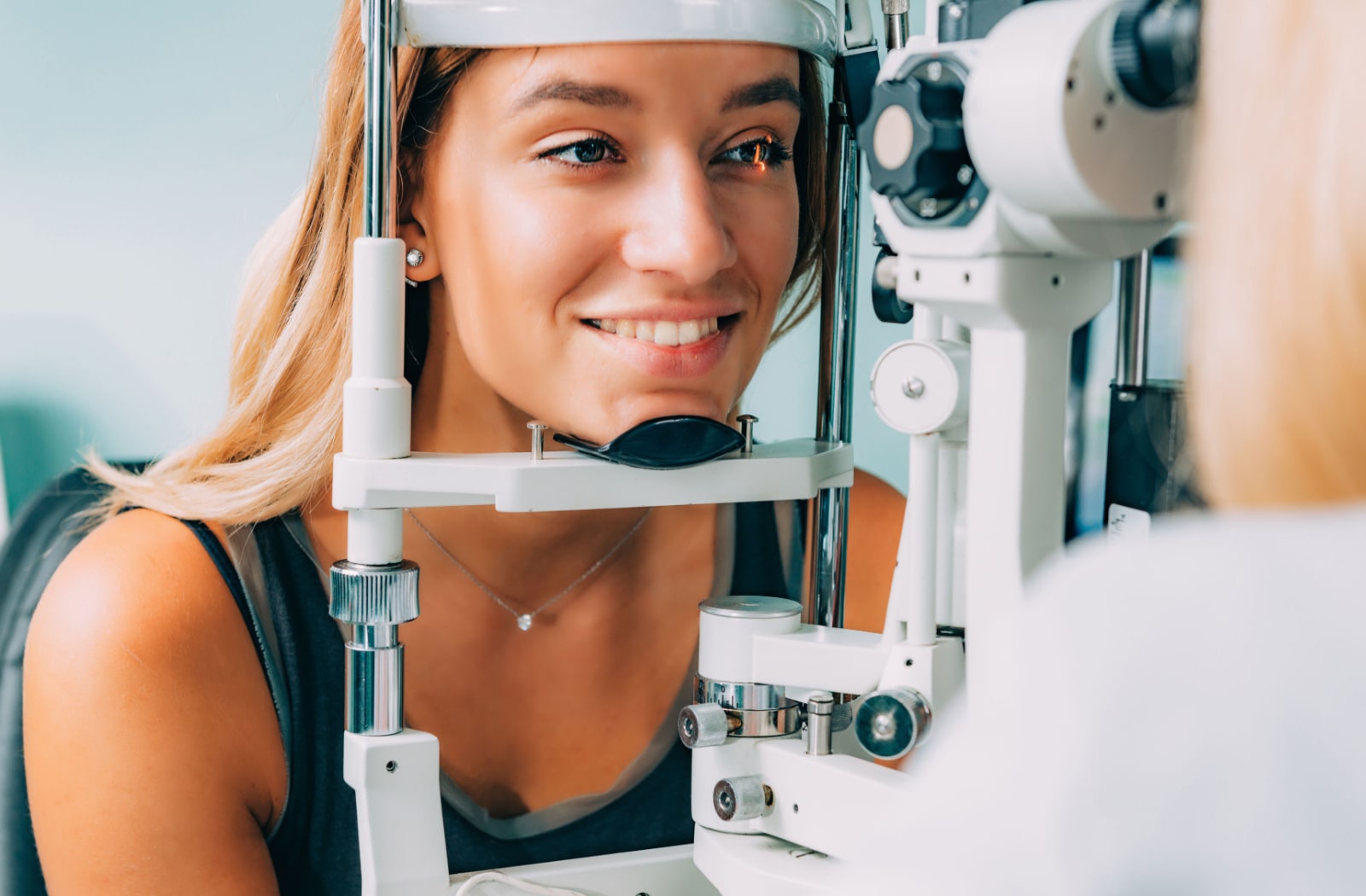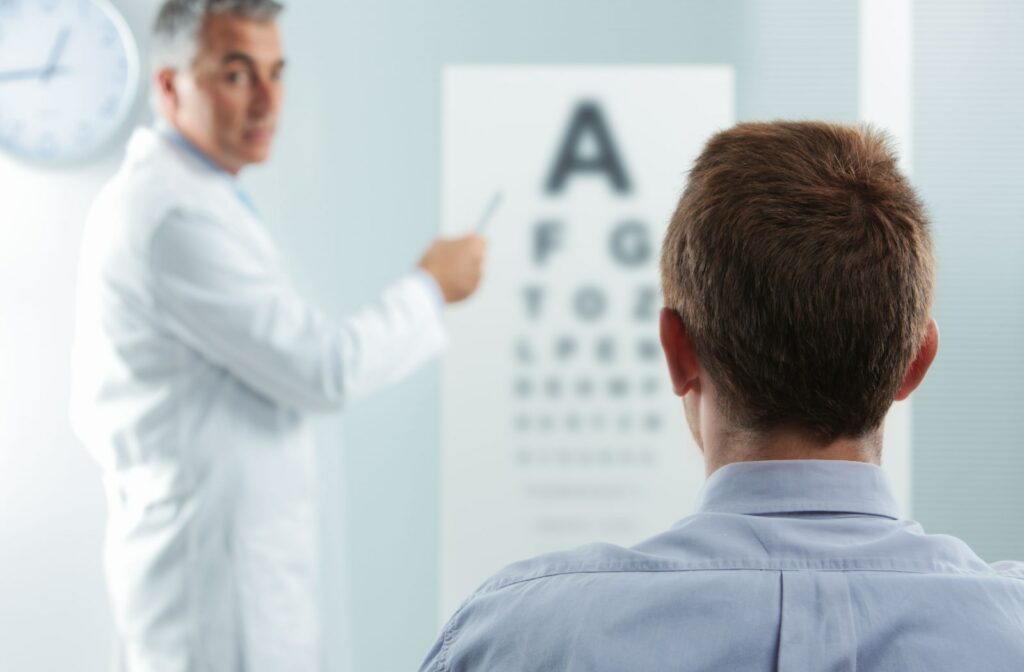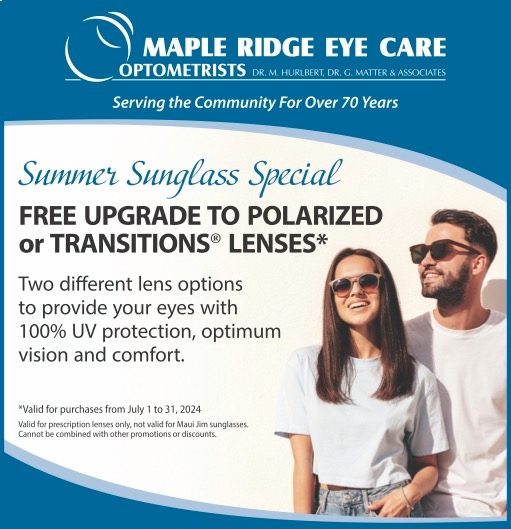It can sometimes feel like you never have enough time to get everything done, but it’s worth prioritizing your ocular health with comprehensive eye exams. By keeping up with routine exams, your optometrist can use modern technology to find your prescription and watch for eye disease warning signs.
The length of an exam depends on the sort of tests you or your family require. A children’s eye exam can take 15–45 minutes, while adult and senior eye exams take 25–55 minutes.
How Often Should I Have an Eye Exam?
Our eyes change a lot as we age, so that’s a huge factor in how often you should get an eye exam. Fortunately, the Canadian Association of Optometrists has a recommended eye exam schedule you can follow:
- Infants: First exam between 6–9 months
- 2–5 years: At least 1 exam before starting school
- 6–18 years: 1 exam annually
- 19–64 years: 1 exam at least every 2 years
- 65+ years: 1 exam annually
This schedule, however, is only a general guideline. A comprehensive eye exam does more than simply test how well you can see. Your optometrist is on the lookout for signs of eye disease, such as glaucoma or cataracts. So, if you’re at high risk for these, or another ocular condition, you may need to come in more frequently.
Determining the Length of Your Eye Exam
Since the length of an eye exam depends on the tests, your eye health and individual needs are a factor. The better prepared you are with your medical history and current concerns, the more you can get out of your time. Having a family optometrist can go a long way for your care.
Remember, eye exams are about more than just vision. For example, diabetes can affect your eyes in many ways. When your optometrist knows about this, they can offer tests more focused on your needs.
This is also the perfect time to bring up dry eye or digital eye strain symptoms if you’re experiencing them.

Tests in an Eye Exam
Our eyes are complex and precise. This intricacy also means many things can affect them. Fortunately, eye care is constantly evolving, and with modern technology, your optometrist can detect eye disease and assess general eye health with greater clarity.
Some of the tests you can expect during a comprehensive eye exam include:
Visual Acuity
Visual acuity tests measure how clearly your eyes can see using a Snellen chart or screen to show you letters or symbols. By covering one eye and reading these letters out loud, your optometrist can determine your visual acuity.
Afterwards, you’ll likely have a refraction test, where you’ll do the same thing, but this time you’ll look through a mask-like device called a phoropter. Your optometrist can use the results to determine if you have a refractive error such as nearsightedness, farsightedness, or astigmatism.
Retinal Examination
The layer of photoreactive cells at the back of your eye, known as the retina, can tell us much about your health. With retinal imaging, your optometrist can get images of the back of your eye, allowing us to examine them closely for potential issues.
Your optometrist can also use optical coherence tomography (OCT) to scan and capture cross-sections of your retina. Using high-frequency light, we can actually look at the thickness of your retina and check for fluid, swelling, or other signs that may indicate a retinal condition.
Glaucoma Testing
Glaucoma is one of the leading causes of blindness worldwide and can appear with little or no symptoms. The most common type of glaucoma occurs when increased pressure in your eye damages the connection to the optic nerve. Your optometrist can test your intraocular pressure (IOP) using a tonometer. This tonometer can be contact or non-contact, but in either case, it can give a sign of what the inside of your eye is experiencing.
Not all types of glaucoma are associated with IOP, however. That’s why we also use visual field testing to identify blind spots in your peripheral vision, which can be an early sign of glaucoma and indicates your optometrist should look deeper.
General Eye Health
The eye has many parts, some harder to see than others. A slit lamp uses a bright light and microscope so your optometrist can peer into your eye and inspect your cornea, iris, retina, and optic nerve.
Using corneal mapping technology, we can map your cornea to look for injuries or diseases. This technology is also essential for properly fitting a contact lens.
Your optometrist can also do an infrared scan of the meibomian glands that line your eyelids. If these glands become blocked, it could lead to dry eyes.
Binocular Vision Assessment
Binocular vision refers to the ability to use both eyes together. Your optometrist can test your eye muscles and see if your eyes move as one. If not, you could have trouble focusing on objects.
Kid’s Eye Exams
Many tests for children are the same as adults, but for young, growing eyes, there are some additional areas of concern. A child struggling with vision could have problems in school, so kid’s eye exams focus on measuring these essential visual functions.
Tests for kids examine:
- Myopia (nearsightedness)
- Hyperopia (farsightedness)
- Colour vision
- Hand-eye coordination
- Eye teaming
- Focusing power
Myopia is especially important to look out for, as it’s common and can progressively worsen as your child ages. Your optometrist can measure the axial length of your child’s eyes over time, which can indicate how fast myopia is progressing, and offer myopia control plans.
Making the Most of Your Time
Maple Ridge Eye Care has the technology and experience to make the most of your time at our office. So feel confident with a complete picture of your eye health, and book your next eye exam with us today!


